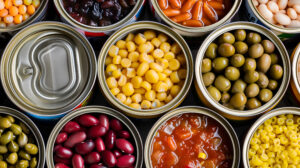FDA To Adjust Foreign Country Food Safety Systems Recognition Oversight
FDA continues to leverage ways to improve use of resources and utilize risk-based systems to allocate resources, including inspections. Regulation of imported foods has been a risk-based system for years and FDA continues to further improve the process.
If you import food or ingredients, you are likely aware that the US has food safety Systems Recognition Arrangements (SRAs) with certain countries. A voluntary partnership between the FDA and a foreign regulatory counterpart or competent food safety authority; the arrangements allow FDA to leverage regulatory partners’ food safety systems, reallocate resources in a more risk-based manner, and improve and expand information sharing on food safety issues.
Having signed SRAs with the participating agencies in Australia in 2017, and Canada and New Zealand in 2018, FDA is continuing to evolve and expand the arrangements. For example, it is currently in the initial phases of assessing the European Union, and, on July 9, 2021, FDA issued a new draft guidance for its administration staff: FDA Oversight of Food Products Covered by Systems Recognition Arrangements. The new draft guidance addresses how the agency plans to adjust its regulatory oversight activities for covered foods imported from countries with which it has the SRAs.
With the agency having determined that the countries produce similar food safety outcomes through an FDA assessment, the draft guidance details adjustments to FDA’s regulatory oversight activities including:
- In-country food establishment inspections. FDA does not intend to prioritize foreign establishment inspections in countries with an SRA. Therefore, FDA’s routine inspections of foreign food establishments for food products covered by an SRA will be rare, allowing FDA to allocate its risk-based foreign inspection resources more efficiently and effectively. Nevertheless, FDA intends to continue to conduct inspections in countries with SRAs under certain situations.
- Automated screening and risk targeting and review of imported food. FDA intends to adjust its risk-based screening and targeting criteria for import entries of food products covered by an SRA to reflect FDA’s determination of the comparability of the regulatory system covered by an SRA. Risk-based screening and review for food products imported from a country with an SRA that are not covered by the SRA will remain unchanged. The existence of an SRA with a foreign competent authority does not automatically affect whether there appears to be a violation of FDA requirements.
- Examination and sampling of imported food. Generally, FDA will not prioritize import samples and field examinations of food products covered by an SRA. However, there are some situations where FDA will prioritize sampling a shipment of food products from a country with an SRA.
- Relevance of importer verification programs. In accordance with FDA’s risk-based approach to inspections, when verifying an importer’s compliance with importer verification requirements, FDA will make risk-based decisions about which foods to target. FDA’s inspections of imported, non-covered products will remain unchanged.
- Regulatory compliance actions. FDA may pursue regulatory actions, such as issuing warning letters, adding establishments or food products to DWPE, and refusing products offered for import, as appropriate. Having confidence in the food safety programs of countries with SRAs, FDA will consider information provided by the regulatory authorities, as appropriate, when FDA considers regulatory action.
Systems recognition takes into account whether (1) another country’s food safety system provides a similar, though not necessarily identical, system of protections as the U.S. food safety system under FDA’s jurisdiction; and the country’s food safety authority or authorities provide similar oversight and monitoring activities for food produced under its jurisdiction as FDA provides. Systems recognition is based on the conclusion that food safety systems with similar elements and similar levels of oversight lead to similar food safety outcomes. Additionally, Systems Recognition is a reciprocal process, showing that each country’s food authority recognizes the others food safety systems as yielding similar outcomes.
Complexities and challenges in the food industry continue to increase. US regulatory agencies have a challenging job to focus on areas of greatest risk and prevent food safety problems before they arise. FDA’s focus on use of technology, data handling and risk-based inspections are all in alignment with industry thinking of putting the resources where the risks are. Perhaps in time we will see this approach adopted by all public health and food regulatory agencies in the US with a move to a single food safety system.
For more information on the five key activities and other aspects of the draft guidance, download the document here. The draft guidance is open to comments through September 10, 2021.





